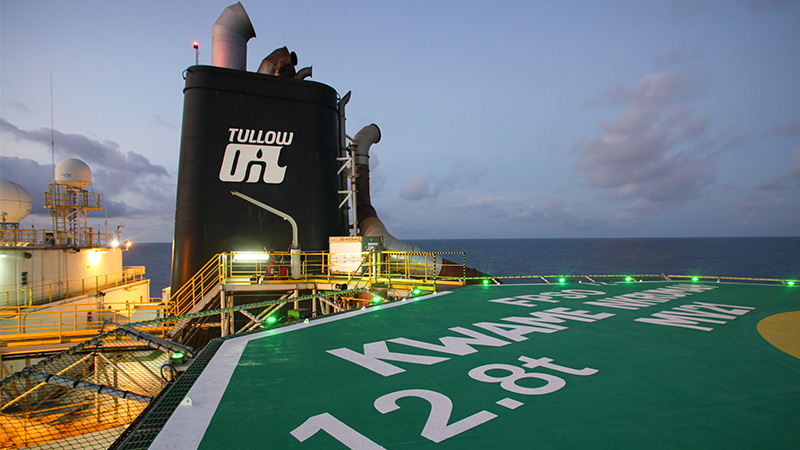Tullow Oil Plc has reported a loss after tax of $61 million for the first half of 2025, reversing a profit of $196 million in the same period last year, as the company grapples with falling oil prices, lower production volumes, and declining revenues.
Tullow’s Chief Financial Officer and Interim Chief Executive Officer, Richard Miller, described the company’s performance as challenging but pointed to strategic actions aimed at long-term value creation.
“Our 2025 strategic priorities remain clear: refinancing our capital structure, optimising production, increasing reserves, and completing the sale of our Kenyan assets, having already realised $300 million proceeds from the sale of our portfolio of assets in Gabon.”
Richard Miller, Tullow CFO and Interim CEO
Tullow’s revenue fell sharply to $524 million in H1 2025, down from $759 million a year earlier.

The decline was driven largely by reduced realised oil prices, which averaged $69.00 per barrel after hedging down from $77.70 per barrel in H1 2024.
Gross profit tumbled to $218 million, less than half of the $460 million recorded in the prior year.
Excluding contributions from Gabonese assets already sold, Group revenue shrank further to $411 million, from $666 million, while gross profit dropped to $165 million from $387 million.
Loss after tax, excluding Gabon widened to $80 million compared to a $106 million profit in the same period in 2024.
Operational challenges at Jubilee

A combination of lower production volumes, timing of liftings, and maintenance-related disruptions at Jubilee contributed to the financial downturn, Tullow explained.
Jubilee remains the company’s flagship asset and a major component of its Ghana operations, but technical and timing issues undermined profitability and output in the first half of the year.
Free cash flow remained under pressure, posting a negative $188 million. This result aligned with expectations but represented a deterioration from the $126 million deficit of H1 2024.
Tullow reduced capital expenditure to $103 million, down from $157 million, while decommissioning costs edged up slightly to $13 million.
In June 2025, Tullow’s net debt stood at $1.6 billion, slightly improved from $1.7 billion a year earlier.
However, gearing pressure intensified, with net debt to EBITDAX rising to 1.9 times from 1.4x a year earlier.
Excluding Gabon assets, gearing deteriorated further to 2.1x, indicating tightening financial conditions. Meanwhile, available liquidity narrowed significantly to $200 million, down from $700 million.
Tullow’s Path Forward

Richard Miller struck a cautiously optimistic tone, indicating that the second half of the year will focus on executing key strategic priorities.
“In the second half of the year we are focused on refinancing our capital structure, production optimisation activities and continuing to optimise our cost base.”
Richard Miller, Tullow CFO and Interim CEO
He argued that progress made in the first half, combined with action in the second, will help “unlock Tullow’s intrinsic value.”
Financing options and divestments remain at the top of the agenda. The planned asset sale in Kenya, alongside the $300 million realized from Gabon divestments is critical for deleveraging and reducing liquidity risks.
In addition, Tullow is expected to push ahead with cost optimisation initiatives and production-enhancing projects to stabilise its cash flows.
Tullow’s results reflect the vulnerabilities of mid‑tier energy companies facing volatile oil prices and operational hiccups.
The modest reduction in realised crude prices underscores how price fluctuations especially when paired with effective hedging, can sharply affect margins. Lower production rates due to maintenance or operational issues further compound the situation.
Looking ahead to H2 2025, all eyes will be on Jubilee’s performance, the finalisation of the Kenya divestment, and discipline in capital expenditure.
Should Tullow deliver on these fronts, it stands a chance to stabilise its balance sheet and reset for value creation in 2026 and beyond. However, continued volatility could further erode returns and place pressure on stakeholders.
READ ALSO: IMF Urges BoG to Hold Tight on Policy Rate to Cement Disinflation Gains





















